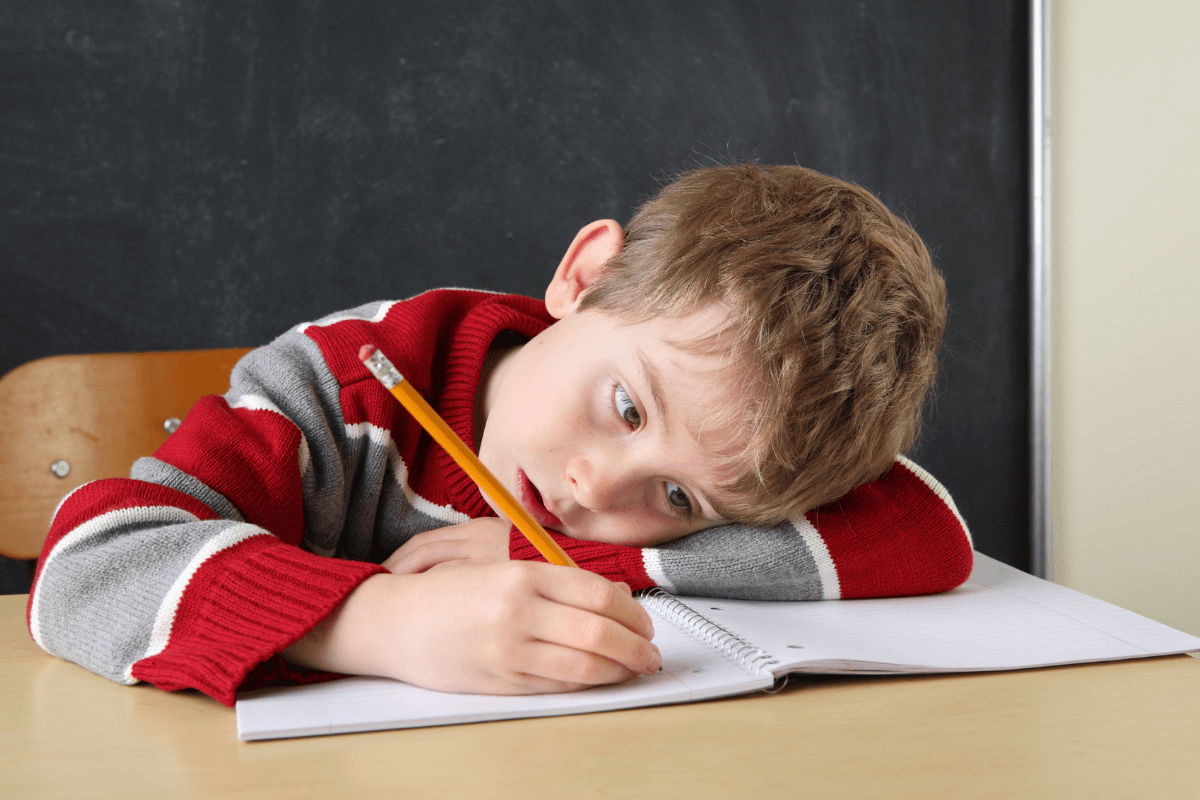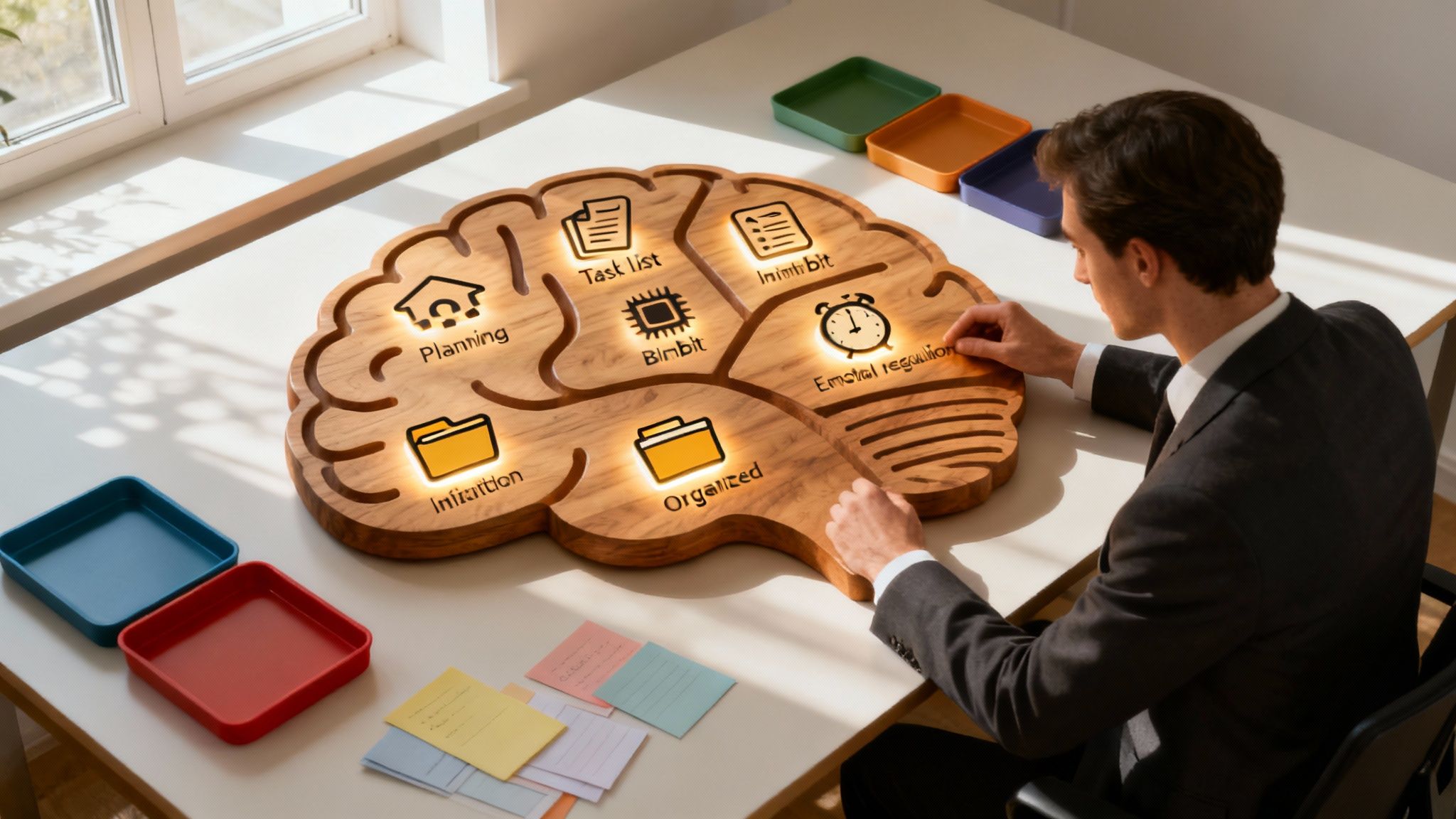I wasn’t the one who first noticed ADHD symptoms in my youngest daughter—it was her swimming teacher. “You might want to have her evaluated,” she said, as my temperamental child had another frustrated meltdown in the shallow end.
While you can’t diagnose attention-deficit/hyperactivity disorder (ADHD) as a teacher, you can be the first to spot symptoms that may eventually lead to a life-changing diagnosis. Even if they’re undiagnosed, students with ADHD-like symptoms can benefit from extra support in your classroom.
Let’s explore ways to identify ADHD in students (from kindergarten to fifth grade) and how you can help support ADHD kids and their families.
Too long; didn’t read
- Children with ADHD don’t always display “typical” symptoms like hyperactivity and impulsivity.
- It’s common for ADHD kids to be disorganized, have a hard time following instructions, “zone out,” or be disruptive during class.
- There are many ways you can support your students, including deadline adjustments and providing written instructions for assignments—more ideas below!
- This article focuses on younger children from kindergarten to fifth grade; watch out for our next one on ADHD signs in older kids!
How can you tell if a student has ADHD?
You’re probably familiar with the “textbook” symptoms of ADHD; kids who are fidgety, “hyper,” and impulsive tend to stand out in classrooms. These kids may already have an ADHD diagnosis, or, more often than not, ADHD is on their parents’ radar.
However, not all children with ADHD display so-called ‘typical’ ADHD symptoms, and ADHD can manifest in many other ways.
Lesser known symptoms of ADHD in school children

Many of the lesser-known ways in which ADHD shows up in school can be misinterpreted as carelessness, laziness, or disrespectful behavior. But with more nuanced knowledge of ADHD, you can learn to spot these signs for what they are and help your students on their way to get the support they need.
You may notice your student:
- Has difficulty following instructions
- Gets easily distracted or daydreams a lot
- Loses or misplaces things frequently
- Is quickly frustrated or angered
- Has trouble waiting their turn
- Talks too much or at inappropriate times
- Has frequent strong emotional reactions or meltdowns
- Has difficulties making or maintaining friendships
- Engages in risky behavior (e.g. playing pranks on classmates or picking fights)
5 signs of ADHD in the classroom
ADHD symptoms can manifest as early as preschool, but it’s important to remember that ADHD-like behaviors in small children don’t always mean they have ADHD.
All small children can be impatient, fidgety, and have temper tantrums. The key to differentiating ADHD kids from neurotypical kids is the frequency and severity of these behaviors and the extent to which they interfere with the child’s success in the classroom.
1. Meltdowns and emotional outbursts
Meltdowns and outbursts can shock and embarrass everyone, especially when they seem to come out of nowhere. For a child with ADHD, meltdowns are connected to problems with emotional regulation and frustration, especially when a child feels consistently unable to meet the expectations of adults.1
In preschoolers, meltdowns may happen more often and for what seem like superficial reasons. And these outbursts can continue into grade school, long after their neurotypical peers have stopped having them.
2. Missing materials and losing their homework
Children with ADHD may struggle with all subjects or do well in some subjects but not others. Often, ADHD manifests more as difficulty staying organized than proficiency in any one subject. Kids with ADHD may do their homework but forget to bring it to school. They may also leave behind items like their PE kit or library books.
It’s also common for kids with ADHD to have trouble keeping track of due dates. They may not be ready for a test or quiz because they forgot to study or didn’t take note of the test date.
Most of the time, these things do not result from the student not wanting to do the work. Scientists think that problems with working memory may be more related to inattentive behavior and poor organizational skills.2
3. Not following instructions
Following directions is a multi-faceted process that requires a few things to happen in the brain, including:3
- Reading the directions wholly (if they’re written) or paying attention to verbal instructions
- Remembering what the instructions are
- Focusing on the task from start to finish
- Planning and moving on to the next step at the appropriate time
- Controlling the impulse to do something else instead
Problems with working memory and executive functions can get in the way of these processes, especially with multi-step instructions. This is one reason why ADHD students can get an incomplete picture of what’s expected of them. For example, they may hear just one part of a three-part assignment and end up turning in unfinished work.
4. “Zoning out”
Neurotypical people can focus more easily on a task by deliberately “tuning out” the parts of the brain devoted to (1) imagination/reflection and (2) external stimuli processing. The former part of the brain is where daydreaming comes from.
For people with ADHD, the parts of the brain devoted to imagination and reflection tend to dominate, while those responsible for focus are de-prioritized.4 This is why kids with ADHD can appear to lack attention or “zone out” when they’re supposed to be on task and may seem to ignore you when you call their name.
5. Being disruptive or talking too much

This behavior comes down to impulse control. In a typical example of poor impulse control, a child might have a hard time staying seated or may do something risky on the playground, like jumping from the top of the slide. But impulsive behavior can also manifest as talking at inappropriate times, blurting out answers, or being otherwise disruptive during work time or when teachers or classmates are speaking.5
This can be irritating for teachers, especially when it happens frequently. You may feel like your student “should know better,” and most of the time, they do know and want to behave differently—but they lack the ability to control their impulses.
How to support students with ADHD
Kids with ADHD can inspire frustration in their teachers. Their behavior may seem deliberate or unruly, and it’s easy to default to criticism or discipline when you feel pressured to remain in control of the classroom.
Most of the time, though, the first step towards giving them the support they need is recognizing that your student’s behavioral problems are symptoms of a neurodevelopmental disorder, not defiance.
1. ADHD support in preschool
Preschoolers with ADHD can be volatile and often too young to understand why their behavior isn’t appropriate. The best way to support children at this age is to be patient, give them space to react, and show empathy for their experiences.
Acknowledge and reward desired behaviors and encourage problem-solving. “I can see that you’re frustrated because Frankie has the red paint. What can you do while you’re waiting for your turn? Why don’t you work on this part of your picture with the green paint?”
With preschoolers, it’s important to remember that you won’t always be able to manage ADHD-related behaviors successfully. Their brains just aren’t ready for that yet, and that’s okay!
Consistency and patience are key.
2. Grade school support
Reprimanding a child with ADHD is not usually helpful, especially if you do it in front of their peers. Try using subtle cues to stop disruptive behavior.
For example, when your student interrupts a lesson, make eye contact and use a hand signal to indicate that they need to tone it down. Some kids benefit from fidget toys they can use instead of creating a distraction.
Grade school-aged kids with ADHD may need special accommodations to help them succeed. You might need to reduce the amount of homework you give to your student or give them assignments more tailored to their learning style.
Students with ADHD may need more time to complete tests or assignments or extra time to “blow off steam.” Consider giving your student a desk in a quieter part of the room with fewer distractions. Helping them stay organized is also essential at this age since they’ll need these skills as they enter middle and high school.
3. Support at any age
No matter what grade you teach, it’s important to communicate with your student’s parents.
Learn about your student:
- Does your student have parents or siblings with ADHD?
- Do they have any comorbidities (other conditions like autism or sensory processing disorder that may also impact the child’s learning)?
- Is the student taking ADHD medication, or have they done so previously?
- Are there any strategies that have worked for the student in the past?
🧠 What if it’s not just ADHD? Check out our article on common learning disabilities and their link to ADHD.
Final thoughts
Identifying ADHD in students goes beyond the typical symptoms of hyperactivity and impulsivity. Understanding and learning about the lesser-known signs of ADHD is crucial in spotting children in need of extra support in the classroom, and communicating with your student’s parents can help you learn about their individual needs and strategies that have worked in the past.
Most importantly, recognizing that kids with ADHD don’t act out of malice but because they are wired differently can help you develop a positive and productive relationship with your ADHD student.
---
Sources
1 J Abnorm Child Psychol | Emotional Understanding, Reactivity, and Regulation in Young Children with ADHD Symptoms (2017)
2 J Child Psychol Psychiatr | Working memory and organizational skills problems in ADHD (2018)
3 Frontiers in Psychology | Impaired Memory for Instructions in Children with Attention-Deficit Hyperactivity Disorder Is Improved by Action at Presentation and Recall (2017)
4 PLOS ONE | Hierarchical integrated and segregated processing in the functional brain default mode network within attention-deficit/hyperactivity disorder (2019)
5 Frontiers in Human Neuroscience | Frontal Dysfunctions of Impulse Control – A Systematic Review in Borderline Personality Disorder and Attention-Deficit/Hyperactivity Disorder (2014)

.jpg)







